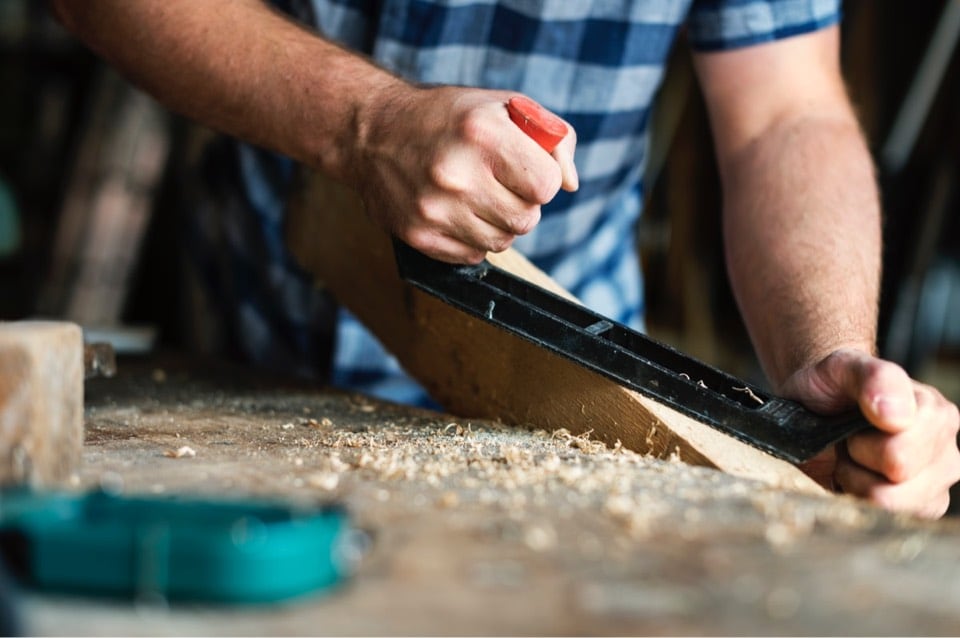Whether you’re just starting out with your own business after completing your building and construction certificates, or have been looking for ways to tighten the purse strings and save money, every carpenter can benefit from reassessing the way in which they operate.
Cutting costs needn’t mean cutting corners. It’s merely about conducting smart, cost-effective business for the biggest possible return while still keeping your client base happy.
As a self-employed carpenter, one of your main tasks is be sure that your business knowledge is on par with your carpentry talent. CWBTS’s Certificate IV in Building and Construction has a component which focuses on all crucial aspects of business ownership. It is unfortunately all too common for budding business owners to fall into traps which eat away at their profits. Read on to find out different ways to make the most of your building and construction business, right from the word go.
UPCYCLE EVERYTHING
Perhaps one of the best ways to cut down on costs as a carpenter is to begin practicing a recycling and upcycling-centric work ethos. Brand new materials will surely cost you, and you might be surprised what you can create with the right attitude from what would otherwise be considered scraps and tossed in the dump. More and more, the building and construction industry is leaning towards eco-friendly and super-creative repurposing.
As consumers are buying more ethically, the market for repurposed or reclaimed goods is growing. As a business owner, there are a variety of ways in which you might first go about repurposing, for example you might keep your offcuts on hand for future use, or make regular salvage trips. By building on the knowledge you gained during your Certificate IV in Building and Construction, you’re able to find your own business niche and make the most of upcycling.
RESELL MATERIALS
If you come across offcuts or waste materials that you won’t use, consider passing them on to someone who will. Copper and plumbing fittings could be quite valuable. You might even know of a fellow building and construction tradesperson who’ll take some excess soil off of your hands.
Renovation jobs that require demolition can be extremely profitable for the switched on tradesperson. If you know of a few tradies, perhaps ex-peers from your building and construction certificates, you might like to float the idea of a salvage swap arrangement.
Not only could you make a bit of extra money on the side, but you’ll also save time and money by avoiding sending your goods to landfill.

DOUBLE-CHECK YOUR MEASUREMENTS
Remember what you heard every day when studying your building and construction certificates? Measure twice, cut once.
There’s nothing quite like the sinking feeling of realising that you’ve cut a crucial beam too short. Wasted materials can be one of the biggest drains on costs. The good news is that by integrating some simple checks into your everyday work, it can also be one of your biggest ways to save. After all, anyone who has completed their Certificate IV in Building and Construction will know that profit and loss go hand in hand.
‘Measure, mark, measure again and cut’ should be your four-part mantra every day on the job. That said, we’re only human and mistakes will still happen. Again, keep your cut timber for future use, or sell it on to avoid absorbing that loss.
ADD FAT IN YOUR CONTRACTS
All business owners, in every industry, are bound to encounter unforeseen issues. In some cases, it may be human error that cost you a fortune, or unstoppable events such as the weather or pests. No matter the issue, you can save yourself from a huge headache by making sure your contract is watertight.
You might like to send a certain cut from every job to an emergency fund, to cover you if a disaster strikes. Alternatively, you might make the decisions to bump up your prices this year to add in some extra cushioning if you run into a problem.
Take a look at the average wage for a self-employed carpenter, and consider influencing factors like your quality of work, your niche, your client base, the experience you deliver and whether you have comprehensive insurance.
Do some research about how to price carpentry work in your area and industry, and make an informed decision.
It’s absolutely essential that you speak with a lawyer about refining your contract, including special provisions that protect you in the event of these worst-case scenarios.

INVESTIGATE YOUR INSURANCE
How long ago did you last read through your building and construction certificates of insurance? Don’t wait until a disaster to realise that your insurance policy doesn’t stretch as far as you thought.
An essential part of setting up your business for success is getting to know your level of insurance cover from day one. When familiarising yourself, there are some key questions to ask: Does it cover the finished product once you’re offsite? How about you and your team when on the job, or a passerby who gets injured by falling equipment? What about if an on-site electrical fault causes a spark that starts a fire? Getting on top of your building and construction insurance now will save you many times over in the future.
As soon as you complete your Certificate IV in Building and Construction, setting up insurance for your self-employed business should be first on your list.
Want more advice on managing a business? Contact us online, or give us a call on 1300 4 CWBTS.





